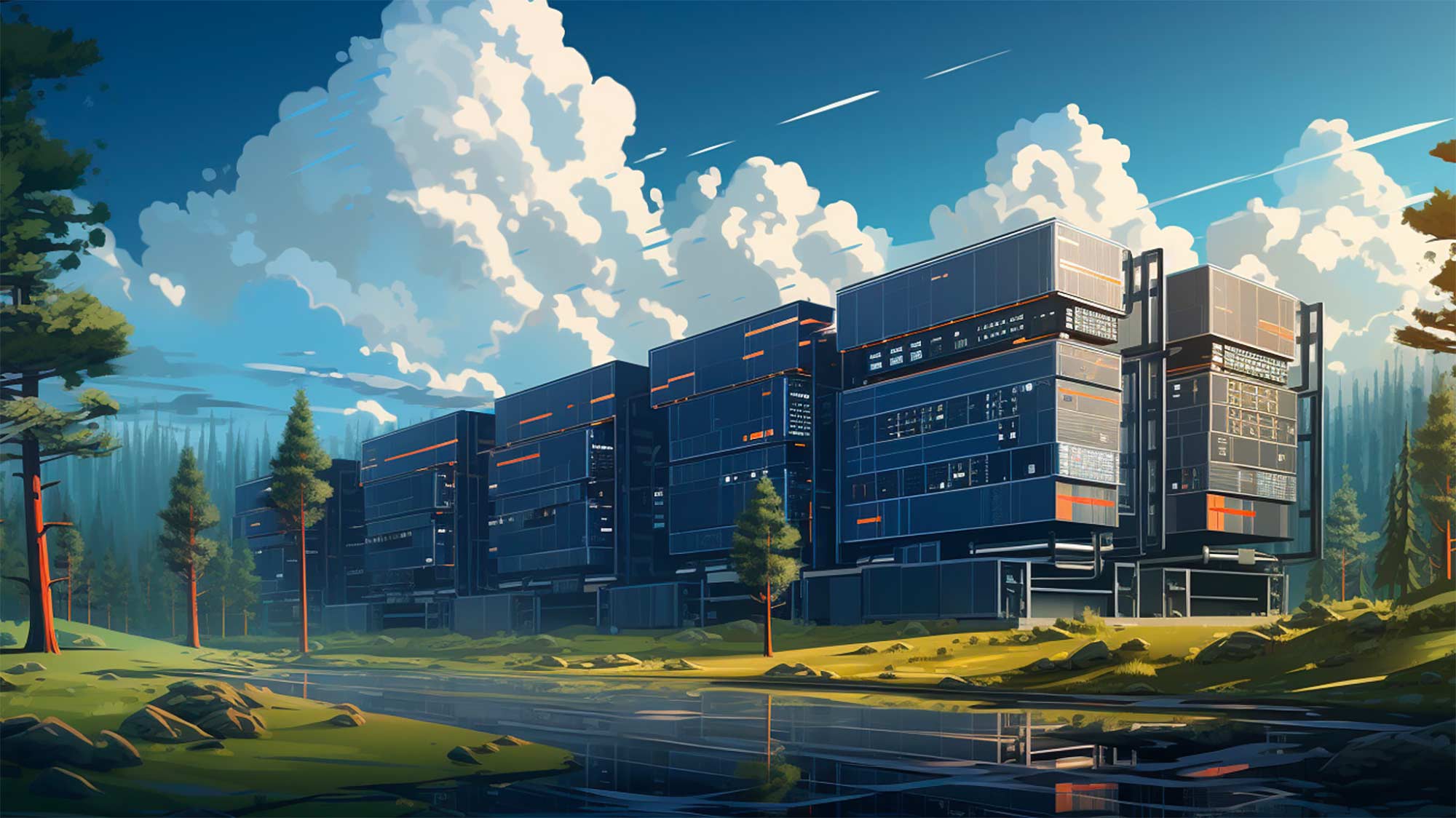Change in the clouds
It’s a problem becoming familiar to many power hungry industries who have committed to net zero. How do you design (and invest in) a durable, commercially viable asset for a world where operations and energy use are likely to be regulated (and taxed or priced) differently very soon? How do you develop the infrastructure you need to meet rapidly growing consumer demand, when so many of the underlying cost and operational assumptions are surely about to change? When is it right to invest and what decisions are sound ones?
These complexities are highly relevant in the fast growing data centre market. Data centres are some of the hardest working, most performance intensive infrastructure yet developed. And the rate of data demand and consumption is growing so fast, that it’s hard to meaningfully quantify how much additional capacity we will need to develop. New supercomputing powered artificial intelligence tools and popular consumer services are adding to this overhead every day. At the same time, competition in the sector is fierce and the pressure to provide a commercially appealing, scalable, reliable service is considerable.
Baselining the issues
Let’s begin by recognising that the ‘green data centre’ is a work in progress. While some projects make good efforts towards one or more element of sustainability most do not, and the industry’s general prioritisation of cost and speed to market usually results in data centre projects that do the minimum needed to gain planning approval.
This creates a dilemma and inertia for data centre operators: current market expectations around cost and program are aligned to a low bar with regard to sustainability, and… it’s hard to invest in designs that are future ready, when the technology to run a truly net zero data centre isn’t yet available.
Also regulators have yet to define what net zero really means for the data industry. The PuE metric (power usage effectiveness) is one existing way of rating a facility’s efficiency and there are early attempts in places like the Netherlands to use this as a regulatory tool, pushing operators towards the goal of a 1:1 ratio, greatly reducing their consumption of energy. However, as further refinement of current infrastructure allows us to approach a PuE of 1 the incremental savings are ever reducing, and the and the end result will still have an enormous carbon footprint.
At Arup we believe that, even without a defined government code or auditing standards, it’s perfectly possible to craft a programme of emissions reduction interventions – both in embodied terms and operationally. These efforts are vital given centres’ 5-decade lifespans of the buildings that are currently being designed and constructed, as well as the growing demand for capacity across the sector. We are currently developing a Net Zero Carbon Data Centre vision, coming in 2024. This will address emissions at all levels, against each scope.
Scope 1 (direct emissions, combustion of hydrocarbons on site)
When we talk about scope 1 emissions, or the direct production of hydrocarbon emissions, data centres have a smaller issue to solve. Centres don’t need heating, but do typically rely on standby diesel generators to back up power normally sourced from the grid. These need to be transitioned to alternative energy sources like grid scale batteries, or switch to multiple redundant grid connections and avoid backup fuels generators entirely. This will be a context related choice. It’s a great example of the industry’s current dilemma – the desire for change exists, but technology like fuel cell batteries are not mature enough to rely upon or commercially invest in.
Scope 2 (indirect emissions associated with purchased electricity)
These address the source of the energy that most data centres run on. A few sites are lucky enough to be in places where they can run on locally sourced renewables, but this is far from the norm. The current practice of using dedicated ‘green energy’ tariffs isn’t a significant long-term solution. Renewable energy choices in this context are just a priced product choice – they don’t necessarily lead to more renewables being in the mix. Plainly, energy efficiency has a role to play. As a centre expands, it should do everything to ensure that the PuE ratio stays as close to 1:1 as possible.
Scope 3 (indirect emissions other than Scope 2 – everything else)
We need to quantify the embodied carbon associated with the data centre, adopt low carbon options and offset where necessary (designs are currently optimised to some combination of cost and programme)
An issue for everyone
It’s not just an issue for operators. Given that scope 3 emissions are caused by the consumption of a service or product, if you’re a client renting capacity from a data centre, you too could end up on the hook for climate or carbon taxes on the data/power you’re consuming.
At every turn, the current data business model looks vulnerable to inevitable regulatory and commercial change. Being competitive tomorrow clearly requires making a commitment to greater sustainability now. Interest in the operational emissions of organisations’ data footprint is also likely to grow over time, leading major players to demand more of the centres they rely on.
To close, although the sustainable data centre is today a story of partial solutions, that doesn’t mean the industry can afford to delay its engagement with the issue. These are factors that will continue to affect and reshape the commercial and operational assumptions of all players in the data business. Beginning to explore the blueprint for greener investments, technologies and practices is largely overdue. Ours is an industry driven by growth and the need to exceed user expectations. But the trends are clear and sustainability will soon join those priorities for decision makers at all levels.
 ;
;

